On this page
Books about bird flightThis page lists books specifically about avian flight. The books are listed by publication date with the most recent at the top.
|
|
|
|
Birds Never Get LostColin Pennycuick and Sandy Pennycuick
Matador
2016
"Birds fly very efficiently, doing little work themselves, and gaining large amounts of energy from the atmosphere. Whether on local flights or migration, they have the freedom to fly anywhere they please. It is because of this that scientists have long been fascinated with how birds remain the ultimate aviators. Birds Never Get Lost includes reports of how bird flight has been studied in laboratories, as well as by flying with them. It also provides a comprehensive background of what distinguishes birds from other flying animals, past and present, from bats to pterosaurs. This fascinating report into the science behind how birds fly and navigate will appeal to engineers, pilots and bird enthusiasts alike."
|
Buy from amazon.co.uk 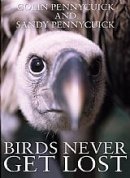
|
|
On the Wing: Insects, Pterosaurs, Birds, Bats and the Evolution of Animal FlightDavid E. Alexander
Oxford University Press USA
2015
"In On the Wing, David Alexander delves into the evolution of flight in each of the four animal groups that evolved powered flight: insects, pterosaurs, birds, and bats. Alexander presents and compares each group's evolutionary history, including diversification and partial or complete extinction, especially as related to flight. The evolution of flight in animals is fascinating story riddled with scientific controversy and colorful characters, from the incredible Archaeopteryx to the recently-discovered feathered dinosaur Microraptor. Chapter topics include aerodynamics, comparisons and contrasts among the powered flyers, and the ultimate evolution away from flight. Alexander even examines the surprisingly diverse group of gliding animals, including squirrels, snakes, and ants. Through rigorous yet accessible writing, Alexander offers a comprehensive and engaging account of the evolution of flight, from dinosaurs to modern birds."
|
Buy from amazon.co.uk 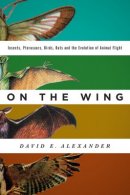
|
|
Evolutionary Biomechanics: Selection, Phylogeny and ConstraintGraham K. Taylor and Adrian L.R. Thomas
Oxford Series in Ecology & Evolution
Oxford University Press
2013
"Evolutionary biomechanics is the study of evolution through the analysis of biomechanical systems. Its unique advantage is the precision with which physical constraints and performance can be predicted from first principles. Instead of reviewing the entire breadth of the biomechanical literature, a few key examples are explored in depth as vehicles for discussing fundamental concepts, analytical techniques, and evolutionary theory. Each chapter develops a conceptual theme, developing the underlying theory and techniques required for analyses in evolutionary biomechanics. Examples from terrestrial biomechanics, metabolic scaling, and bird flight are used to analyse how physics constrains the design space that natural selection is free to explore, and how adaptive evolution finds solutions to the trade-offs between multiple complex conflicting performance objectives."
|
Buy from amazon.co.uk 
|
|
Migration on Wings: Aerodynamics and EnergeticsLakshmi Kantha
Springer Briefs in Applied Sciences and Technology
Springer-Verlag
2012
"This book is an effort to explore the technical aspects associated with bird flight and migration on wings. After a short introduction on the birds migration, the book reviews the aerodynamics and Energetics of Flight and presents the calculation of the Migration Range. In addition, the authors explains aerodynamics of the formation flight and finally introduces great flight diagrams."
|
Buy from amazon.co.uk 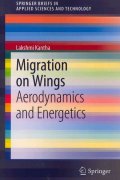
|
|
Birds In FlightCarrol L Henderson
Voyageur Press
2008
"From the singular beauty of a hummingbird hovering and pollinating a flower, the majestic Condor soaring above the Andes, black storks in Kenya, migrating geese in Minnesota, or Swainson's hawks in Bolivia, this book lets you enjoy the beauty of birds taking wing while learning the fascinating science of how, precisely, birds fly."
|
Buy from amazon.co.uk 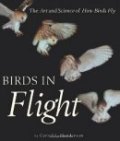
|
|
Modelling the Flying BirdC.J. Pennycuick
Academic Press
2008
"This book outlines the principles of flight, of birds in particular. It describes a way of simplifying the mechanics of flight into a practical computer program, which will predict in some detail what any bird, real or hypothetical, can and cannot do. The Flight program, presented on the companion website, generates performance curves for flapping and gliding flight, and simulations of long-distance migration and accounts successfully for the consumption of muscles and other tissues during migratory flights. The program is effectively a working model of a flying bird (or bat or pterosaur) and is the skeleton around which the book is built. The book provides a wider background and then explains how Flight works and shows how to set up and test hypotheses generated by the program. The book and the program are based on adapting the conventional (and well-tested) thinking of aeronautical engineers to the biological problems of bird flight. Their primary aim is to convince biologists that this is the appropriate way to handle problems that involve flight, to make the engineering background accessible to biologists, and to provide a tool kit in the shape of the Flight program, which they can use to solve practical problems involving bird flight and migration. In addition, the book will be readily accessible to engineers who want to know how birds work, and should be of interest to the ever-growing community working on flapping "micro air vehicles" (MAVs). The program can be used to predict the flight performance and capabilities of reconstructed fossil birds and pterosaurs, flying in ancient atmospheres that differ from present conditions, and also, of course, to predict and account for the results of experiments and observations on living birds and bats."
|
Buy from amazon.co.uk 
|
|
Avian FlightJohn J. Videler
Oxford University Press
2005
"This book provides an up-to-date account of our existing knowledge on the subject, offering new insights and challenging some established views. A brief history of the science of flight introduces the basic physical principles governing aerial locomotion. This is followed by a treatment of flight-related functional morphology, concentrating on the difference in shape of the arm and hand part of the wings, on the structure and function of tails, and on the shape of the body. The anatomy and mechanical properties of feathers receive special attention. Aerodynamic principles used by birds are explained in theory by simply applying Newton's laws, and in practice by showing the direction and velocity of the attached flow around an arm wing cross section and of the leading edge vortex flow above a hand wing. The Archaeopteryx fossils remain crucial in our understanding of the evolution of bird flight despite the recent discovery of a range of well-preserved ancient birds. Avian Flight offers a novel insight into the interactions between wings and air, which challenges established theories relating to the origin of bird flight." Contents: Preface; Acquisition of knowledge; The flight apparatus; Feathers for flight; Aerodynamics; Evolution of bird flight; Bird flight modes; The bird flight engine; Energy required for flight; Comparing the metabolic costs of flight."
|
Buy from amazon.co.uk 
|
|
Nature's Flyers: Birds, Insects, and the Biomechanics of FlightDavid E Alexander
Johns Hopkins University Press
2002
"Instead of relying on elaborate mathematical equations, Alexander explains the physical basis of flight with sharp prose and clear diagrams. Drawing upon bats, birds, insects, pterosaurs, and even winged seeds, he details the basic operating principles of wings and then moves progressively through more complex modes of animal flight, including gliding, flapping, and maneuvering. In addition to summarizing the latest thinking about flight's energy costs, Alexander presents a holistic view of flight and its ramifications as he explores the ecology and evolution of flying animals, addressing behaviorally important topics such as migration and navigation. With somewhat surprising answers, the author then concludes his study by examining the extent to which natural flight has been inspiring or instructive for the architects of human flight - airplane designers and engineers."
|
Buy from amazon.co.uk 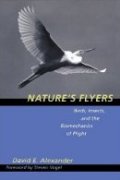
|
|
Dinosaurs of the Air: The Evolution and Loss of Flight in Dinosaurs and BirdsGregory S. Paul
Johns Hopkins University Press
2001
"This text presents the most recent work of evolutionary scientist and dinosaur illustrator, Gregory Paul. It synthesizes the growing body of evidence which suggests that modern-day birds have evolved from theropod dinosaurs of prehistoric times. Paul argues provocatively for the idea that the ancestor-descendant relationship between the dinosaurs and birds can on occasion be reversed, and that many dinosaurs were secondarily flightless descendants of creatures we would regard as birds. The book also offers firsthand interpretations of major fossils; a balanced discussion of the ways we think flight may have evolved (comparing "ground up" and "trees down" scenarios); a close look at the famous urvogel Archaeopteryx, discussing what it can and cannot tell us about bird origins; and in-depth analyses of bird and theropod phylogenetics. Full of detail for the specialist but accessible to the intelligent lay reader, the book includes the author's own illustrations and a technical appendix which provides information, for example, on body mass/wing dimension relationships and avian/dinosaurian metabolics."
|
Buy from amazon.co.uk 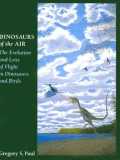
|
|
How Birds FlyJohn K. Terres
Illustrations: Pat Archer
Stackpole Books
1994
"Ornithologist John Terres explains the process by which eagles, hawks, hummingbirds, and other birds fly, soar, and hover."
|
Buy from amazon.co.uk 
|
|
The Bird: Master Of FlightColin Harrison with Howard Loxton
Barrons Educational Series
1993
|
Buy from amazon.co.uk 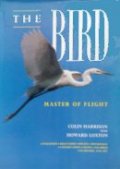
|
|
How Birds FlyDavid Goodnow
Periwinkle Books
1992
"Reveals the mysteries of flapping flight through sequences of high-speed photographs."
|
Buy from amazon.co.uk 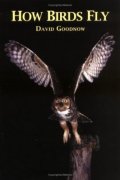
|
|
Vertebrate FlightU.M. Norberg
Springer-Verlag
1989
"This volume presents the basic principles of animal flight including the main requirements for body functions and morphology and the main correlations between structure, form and function in ecological and evolutionary perspectives. The main topics cover such aspects as flight mechanics and aerodynamics, power requirements for gliding and flapping flights, energy-saving flight modes and calculation of optimal flight speeds and power."
|
Buy from amazon.co.uk 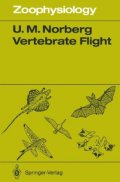
|
|
Vertebrate Flight : A Bibliography to 1985Jeremy Rayner
University Of Bristol Press
1985
|
Buy from amazon.co.uk 
|
|
Bird FlightG. Ruppel
Van Nostrand Reinhold Company
1978
|
Buy from amazon.co.uk 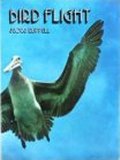
|
|
Flashing Wings: The Drama Of Bird FlightJohn K. Terres
Illustrations: Robert Hines
Foreword: Dean Amadon
Doubleday & Company
1968
Published in the UK by Souvenir Press in 1969.
|
Buy from amazon.co.uk 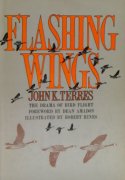
Doubleday edition
Buy from amazon.co.uk
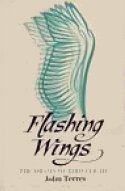
Souvenir Press
|
|
Bird FlightKenneth Simkiss
Hutchinson
1963
|
Buy from amazon.co.uk |
|
Feathered Wings: A Study of the Flight of BirdsAnthony Jack
Methuen & Co
1953
|
Buy from amazon.co.uk 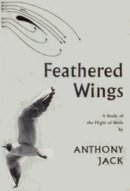
|
|
The Flight of Birds Analyzed through Slow-Motion PhotographyJohn H. Storer
Cranbrook Institute Of Science Michigan
1948
|
Buy from amazon.co.uk 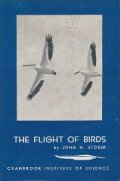
|
|
Birds on the WingJohn Barlee
Collins
1947
Discusses the mechanics of bird flight and bird behavoir in flight. With black and white photographs.
|
Buy from amazon.co.uk 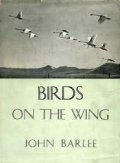
|
|
Bird Flight for Bird LoversJack Parham
The Harborough Publishing Company
1944
|
Buy from amazon.co.uk 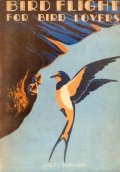
|
|
Flight Speed Of Birds
May Thacher Cooke
Circular 428
US Department of Agriculture
1937
Introduction: "A bird's power of flight is one of its most fascinating characteristics and one that from the earliest times has stirred man's imagination and aroused his envy. One of the writers of the Book of Proverbs found "the way of an eagle in the air" too wonderful for his comprehension. Today, by calling mechanics to his aid, man has achieved the power to travel "as the crow flies"; and although the aviator is still much less independent in the air than the birds he seeks to emulate, we are indebted to him, nevertheless, for much information regarding the flight of birds. Three phases of bird flight have been the subject of much conjecture and investigation, namely, the speed of flight, the altitude of the migratory flights, and, especially in recent years, the mechanics or aeronautics of flight. It is the purpose of the present circular to deal principally with the first, speed of flight, though reference is made to the other two phases in the text and titles of articles dealing with them are included in the bibliography, which gives also the authority for all records of speed given in the table."
|
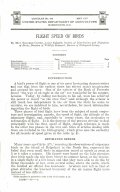
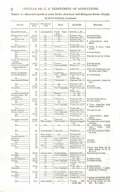 |
|
Birds In Flight
W.P. Pycraft
Illustrations: Roland Green
Gay & Hancock
1922
From the preface: "There are hosts of people who have a genuine love of our native birds without yearning to possess their skins, or desiring to acquire the reputation of being "Ornithologists." They would call them all by name if they could, but seek, alas! in vain, for some book wherein they will find some magic phrase which will enable them to identify every bird they meet by the wayside. Most of our native birds have learnt that "discretion is the better part of valour," when in the neighbourhood of Man. Hence one gets but too often no more than a fleeting glance at their retreating forms, which, from frequent encounters, have become familiar, yet they leave no more than a vague image in the memory. " What bird was that? I have often seen it but have never succeeded in taking it unawares." This is a question, and its comment, often put to me. Those who are in this quandary, and they are many, are always hoping to find some book which will enable them to correctly name the retreating forms. That book wUl never be written. In the following pages an attempt is made to aid such inquirers, and at the same time the difficulties of the task are pointed out. It is hoped, however, that this attempt will find a welcome among those for whom it is made. If it helps them to understand something, at least, of the absorbing and fascinating problems which the study of flight in the animal kingdom presents, it will at least have served some useful purpose. The pursuit of the flying bird will inevitably stimulate a desire to know more about the bewildering changes of plumage presented at different seasons of the year, as well as by the striking differences which often distinguish the two sexes, and the immature birds. The endeavour to satisfy this desire will open up a new world. Those who would pass to this knowledge should possess themselves of the Practical Handbook of British Birds. Though most severely practical, and designed for the serious student alone, even the beginner will find interest in the description of these several plumages, and much else beside that it is essential to know. Now that the study of flight is so much to the fore, some may turn to these pages in the hope of gaining useful information on the theme of mechanical flight. Some help they may find. But it was not for this that they were written. The flight of an aeroplane and the flight of a bird have little in common - at present; though something may be learned by the study of gliding flight and soaring, which of course have their place in this book. But anatomical details and mechanical formulae, necessary to the serious student of flight, would have been entirely out of place here, and they have been omitted. My task has been by no means easy. But it has been enormously helped by the extremely skilful and beautiful work of the artist, Mr. Roland Green. Where birds are concerned, few artists in the past, and very few in the present, have shown any ability to combine accuracy in drawing with ingenuity of composition and faithfulness in colouring. Mr. Green has shown this rare combination; his coloured plates and line-drawings speak for themselves."
|
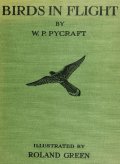
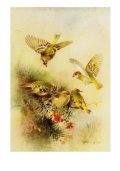
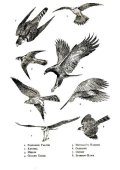
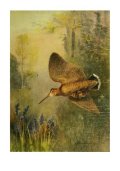 |
|
The Flight Of Birds
F.W. Headley
Witherby & Co
1912
From the preface: "The flight of birds cannot but be of interest to men who sail the air on their biplanes or monoplanes, for the bird is, as yet at any rate, peerless among aviators, and in describing his methods I have kept in view the methods and the difficulties of those who are striving to rival him. It is possible, therefore, that this little book may find readers among those who not only study flight but fly. But, since I have tried as far as possible to avoid technical terms and make it easily intelligible, I hope it may appeal to the larger class who, whether scientific ornithologists or not, take a delight in birds and their doings."
|

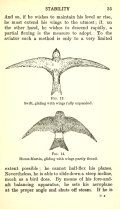 |
|